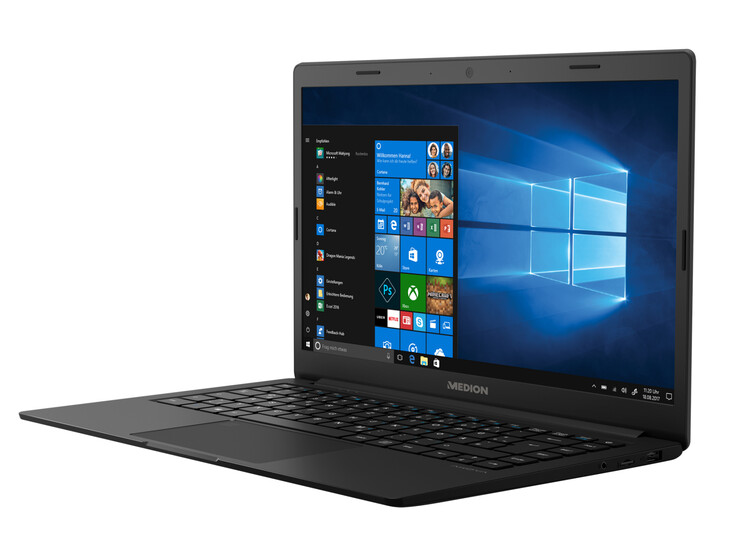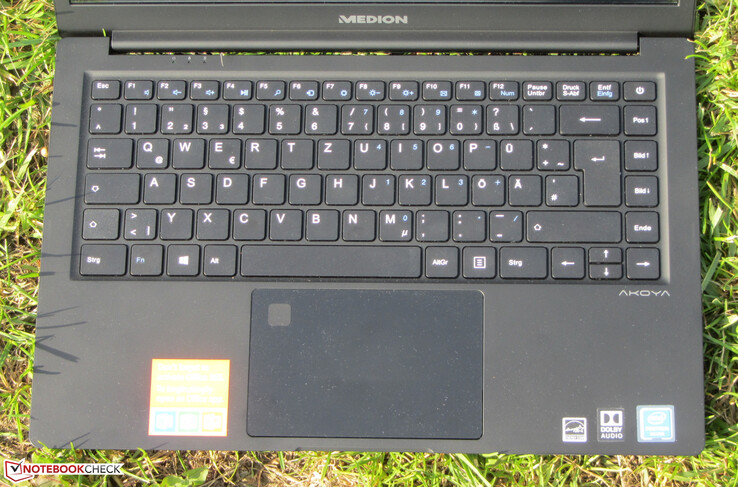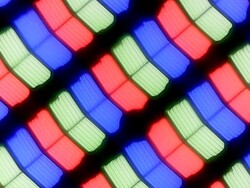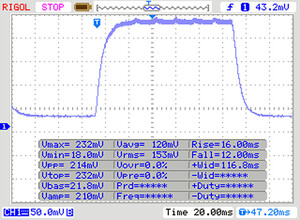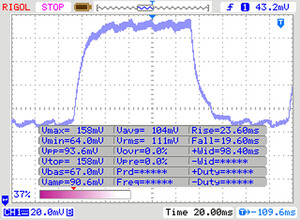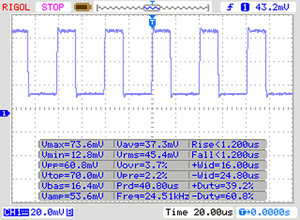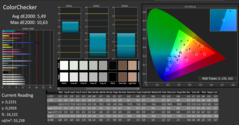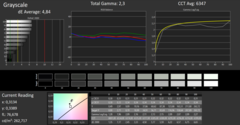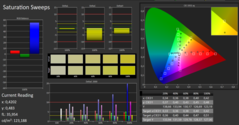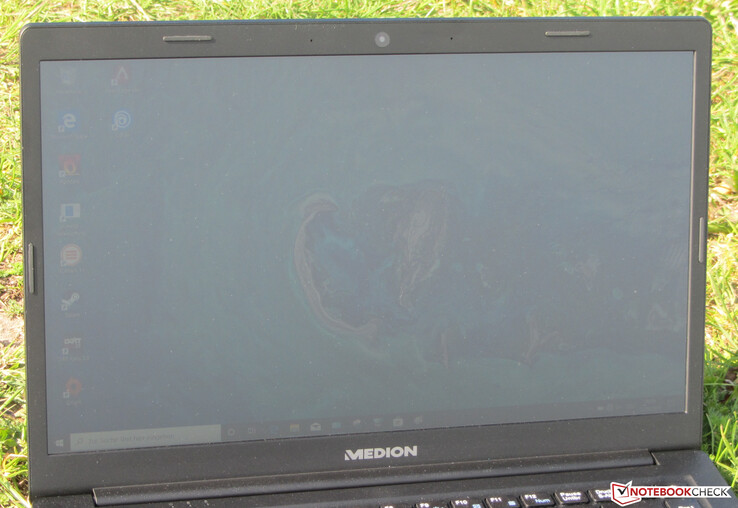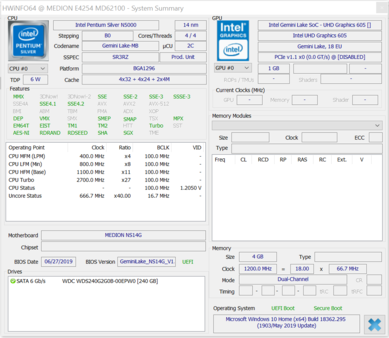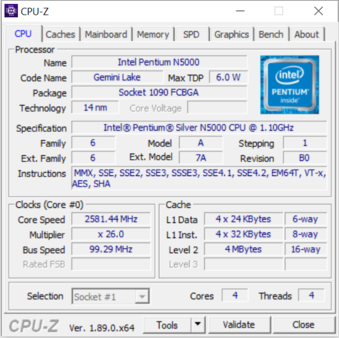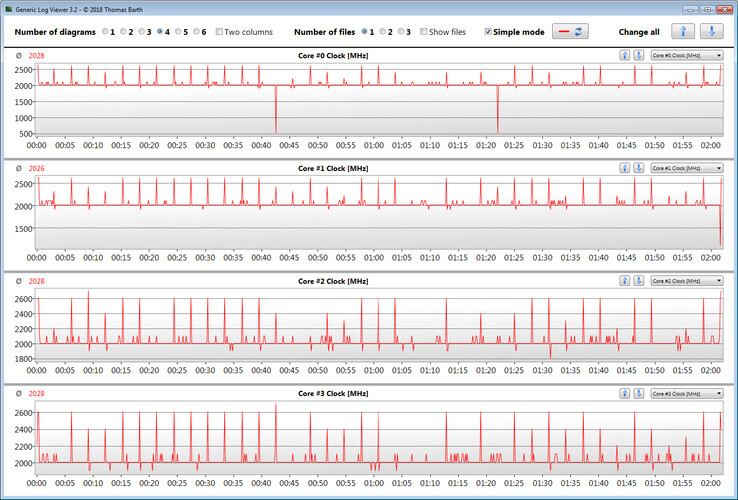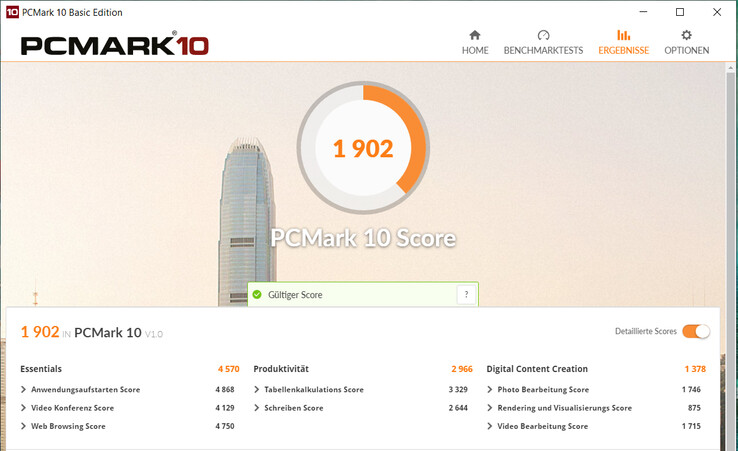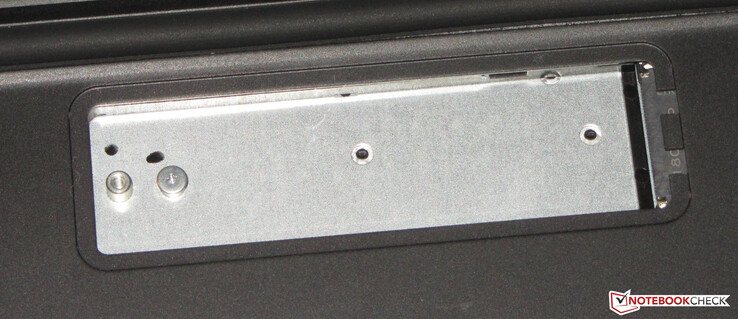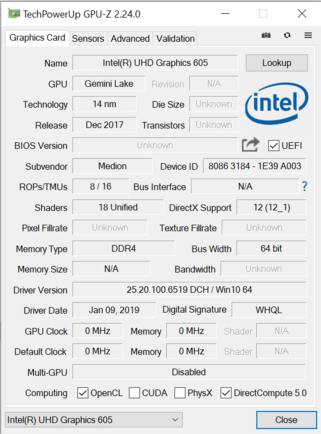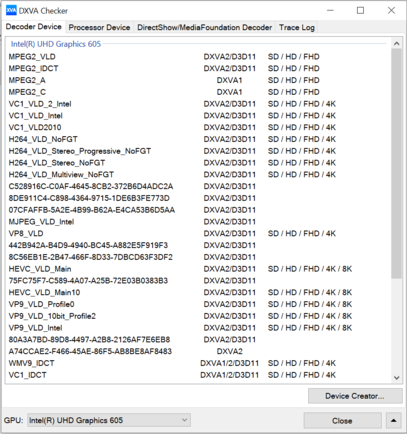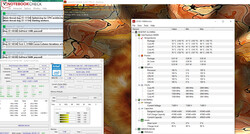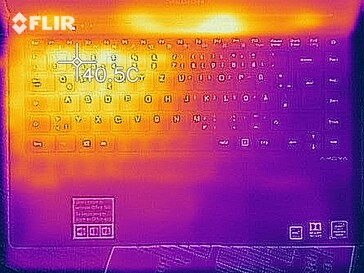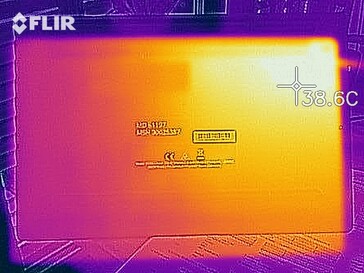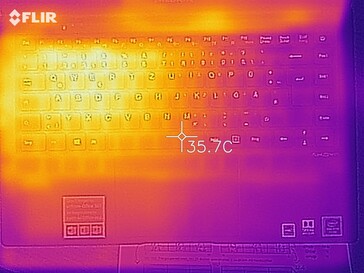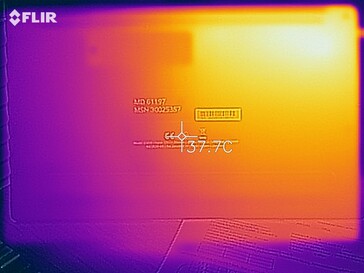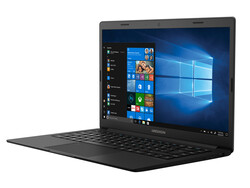Medion Akoya E4253 Laptop Review: Long Runtime for a Small Amount of Money

The Medion Akoya E4253 is one of the simple notebooks in 14-inch format. The computer is powered by a Pentium Silver N5000 processor. The operating system is Windows 10 Home in S mode. A free upgrade to the regular home version of Windows 10 is possible. We used this upgrade in order to be able to run our test. The Akoya's competitors include the Acer Aspire 1 A114-32, the Chuwi LapBook Pro, the Lenovo V130-14IGM, the HP Chromebook 14 G5 and the Acer Swift 1 SF114-32.
Case & Equipment - Medion Relies on a Mix of Materials
Medion packs the technology of the Akoya in a matte black case, which is mostly made of plastic. Only the back of the lid is made of metal. We could not find any defects in the craftsmanship of the device. However, the laptop reveals weaknesses in terms of stability. The case can easily be arched when pressed near the sides of the keyboard and the opposite front corner of the base unit lifts off the stand area. In addition, the base unit can be twisted quite a lot without much effort. A device oriented towards mobility must have a higher stiffness.
To get access to the inside of the device, the bottom panel should be dismantled. First, all screws on the bottom should be removed. Attention: There are two more screws hidden under the rear rubber strip. The bottom panel can then be removed.
The Medion laptop comes with the most necessary interfaces. Two USB slots (1x Type A, 1x Type C) function according to the USB 3.2 Gen 1 standard, the third USB port (Type A) according to the USB 2.0 standard. The Type C port also supports DisplayPort via USB C (this requires a separately purchased adapter). Thus, together with the mini-HDMI output, the Akoya comes with two video outputs.
The memory card reader (Micro SD) is one of the slowest of its kind. When copying large data blocks, a maximum transfer rate of 33.9 MB/s is achieved. We test memory card readers using a reference card (Toshiba Exceria Pro M501 microSDXC 64GB).
The WLAN module packs a chip from Intel (Wireless AC 9462). This supports not only the WLAN standards 802.11 a/b/g/n, but also the fast ac standard. It also provides Bluetooth 5 functionality. The transfer rates can be mediocre at best, as the module offers only 1x1 MIMO.
Note: In this review we use, among others, the official image material from Medion. This falsely shows a USB 2.0 port (Type A) on the left side of the case. In fact, it is a USB 3.2 Gen 1 connector (Type A).
Connectivity
| SD Card Reader | |
| average JPG Copy Test (av. of 3 runs) | |
| Acer Aspire 1 A114-32-P0K1 (Toshiba Exceria Pro SDXC 64 GB UHS-II) | |
| Average of class Subnotebook (18.4 - 142, n=13, last 2 years) | |
| Acer Swift 1 SF114-32-P8GG (Toshiba Exceria Pro SDXC 64 GB UHS-II) | |
| maximum AS SSD Seq Read Test (1GB) | |
| Acer Aspire 1 A114-32-P0K1 (Toshiba Exceria Pro SDXC 64 GB UHS-II) | |
| Average of class Subnotebook (22.5 - 207, n=13, last 2 years) | |
| Acer Swift 1 SF114-32-P8GG (Toshiba Exceria Pro SDXC 64 GB UHS-II) | |
| Medion Akoya E4253-30025387 (Toshiba Exceria Pro M501 microSDXC 64GB) | |
| Lenovo V130-14IGM (Toshiba Exceria Pro SDXC 64 GB UHS-II) | |
Input Devices - Teetering Keyboard
Medion equips the Akoya with an unlit chiclet keyboard. The flat, slightly roughened keys have a short stroke and a clear pressure point. However, the keyboard teeters during typing - more on the right than on the left. All in all, Medion delivers a keyboard suitable for home use. However, it is not the right one for those who type a lot.
The multitouch-capable touchpad occupies an area of approximately 11.4 x 7.4 cm (~ 4.49 x 2.91 in). Thus, there is enough space to use the gesture control. The smooth pad surface makes it easy for the fingers to glide. In the upper left corner, the touchpad does not respond to input due to the built-in fingerprint reader. The stroke is short and the pressure point - clear.
Display - IPS on Board
The matte 14-inch display of the Akoya works with a native resolution of 1920x1080 pixels. The Brightness (241.8 cd/m²) and the contrast (519:1) are too low. We consider values beyond 300 cd/m² or 1000:1 good. Nonetheless: Given the price level of the laptop, the values are acceptable.
The screen shows flicker at a rate of 24,500 Hz at brightness levels of 20 percent and below. Due to the high frequency, even sensitive users should be spared headaches and/or eye problems.
| |||||||||||||||||||||||||
Brightness Distribution: 87 %
Center on Battery: 262 cd/m²
Contrast: 519:1 (Black: 0.505 cd/m²)
ΔE ColorChecker Calman: 5.49 | ∀{0.5-29.43 Ø4.78}
ΔE Greyscale Calman: 4.84 | ∀{0.09-98 Ø5}
61% sRGB (Argyll 1.6.3 3D)
39% AdobeRGB 1998 (Argyll 1.6.3 3D)
42.37% AdobeRGB 1998 (Argyll 3D)
61.1% sRGB (Argyll 3D)
40.96% Display P3 (Argyll 3D)
Gamma: 2.3
CCT: 6347 K
| Medion Akoya E4253-30025387 IPS, 1920x1080, 14" | Chuwi LapBook Pro IPS, 1920x1080, 14" | Acer Aspire 1 A114-32-P0K1 TN LED, 1920x1080, 14" | HP Chromebook 14 G5 IPS, 1920x1080, 14" | Lenovo V130-14IGM TN LED, 1366x768, 14" | Acer Swift 1 SF114-32-P8GG IPS, 1920x1080, 14" | |
|---|---|---|---|---|---|---|
| Display | 67% | -1% | -12% | -7% | ||
| Display P3 Coverage (%) | 40.96 | 73 78% | 40.35 -1% | 36.23 -12% | 37.96 -7% | |
| sRGB Coverage (%) | 61.1 | 96.1 57% | 60.3 -1% | 54.5 -11% | 56.5 -8% | |
| AdobeRGB 1998 Coverage (%) | 42.37 | 70.3 66% | 41.71 -2% | 37.44 -12% | 39.22 -7% | |
| Response Times | -2% | 26% | -15% | 15% | 0% | |
| Response Time Grey 50% / Grey 80% * (ms) | 42 ? | 42 ? -0% | 43 ? -2% | 44 ? -5% | 52 ? -24% | 42 ? -0% |
| Response Time Black / White * (ms) | 28 ? | 29 ? -4% | 13 ? 54% | 35 ? -25% | 13 ? 54% | 28 ? -0% |
| PWM Frequency (Hz) | 24500 ? | 200 ? | 250 ? | 1000 ? | ||
| Screen | 8% | -41% | 54% | -50% | 31% | |
| Brightness middle (cd/m²) | 262 | 297 13% | 208 -21% | 253 -3% | 234 -11% | 250 -5% |
| Brightness (cd/m²) | 242 | 268 11% | 192 -21% | 232 -4% | 216 -11% | 240 -1% |
| Brightness Distribution (%) | 87 | 77 -11% | 85 -2% | 87 0% | 83 -5% | 81 -7% |
| Black Level * (cd/m²) | 0.505 | 0.625 -24% | 0.41 19% | 0.15 70% | 0.51 -1% | 0.13 74% |
| Contrast (:1) | 519 | 475 -8% | 507 -2% | 1687 225% | 459 -12% | 1923 271% |
| Colorchecker dE 2000 * | 5.49 | 5.23 5% | 10.1 -84% | 11.84 -116% | 5.54 -1% | |
| Colorchecker dE 2000 max. * | 10.63 | 9.53 10% | 28.85 -171% | 25.17 -137% | 10.5 1% | |
| Greyscale dE 2000 * | 4.84 | 6.72 -39% | 10.96 -126% | 3.04 37% | 13.97 -189% | 5.2 -7% |
| Gamma | 2.3 96% | 2.38 92% | 2.24 98% | 2.21 100% | 2.13 103% | 2.29 96% |
| CCT | 6347 102% | 7015 93% | 11669 56% | 7015 93% | 18080 36% | 5796 112% |
| Color Space (Percent of AdobeRGB 1998) (%) | 39 | 63 62% | 38 -3% | 35 -10% | 36 -8% | |
| Color Space (Percent of sRGB) (%) | 61 | 96 57% | 59 -3% | 55 -10% | 56 -8% | |
| Colorchecker dE 2000 calibrated * | 4.38 | |||||
| Total Average (Program / Settings) | 24% /
18% | -5% /
-24% | 20% /
37% | -16% /
-34% | 8% /
19% |
* ... smaller is better
Display Response Times
| ↔ Response Time Black to White | ||
|---|---|---|
| 28 ms ... rise ↗ and fall ↘ combined | ↗ 16 ms rise | |
| ↘ 12 ms fall | ||
| The screen shows relatively slow response rates in our tests and may be too slow for gamers. In comparison, all tested devices range from 0.1 (minimum) to 240 (maximum) ms. » 70 % of all devices are better. This means that the measured response time is worse than the average of all tested devices (20.2 ms). | ||
| ↔ Response Time 50% Grey to 80% Grey | ||
| 42 ms ... rise ↗ and fall ↘ combined | ↗ 23 ms rise | |
| ↘ 19 ms fall | ||
| The screen shows slow response rates in our tests and will be unsatisfactory for gamers. In comparison, all tested devices range from 0.165 (minimum) to 636 (maximum) ms. » 66 % of all devices are better. This means that the measured response time is worse than the average of all tested devices (31.6 ms). | ||
Screen Flickering / PWM (Pulse-Width Modulation)
| Screen flickering / PWM detected | 24500 Hz | ≤ 20 % brightness setting | |
The display backlight flickers at 24500 Hz (worst case, e.g., utilizing PWM) Flickering detected at a brightness setting of 20 % and below. There should be no flickering or PWM above this brightness setting. The frequency of 24500 Hz is quite high, so most users sensitive to PWM should not notice any flickering. In comparison: 53 % of all tested devices do not use PWM to dim the display. If PWM was detected, an average of 8098 (minimum: 5 - maximum: 343500) Hz was measured. | |||
The display offers a pretty neat color representation ex factory. With a DeltaE 2000 color deviation of 5.49, however, the target (DeltaE less than 3) is missed. The display does not suffer from a blue cast. The AdobeRGB and sRGB color spaces are not fully reproduced. Coverage rates here are 39 percent (AdobeRGB) and 61 percent (sRGB).
The color profile we provide can slightly improve the color appearance of the screen. It is important to ensure that the same display model (manufacturer + model number) is installed as in our test device. Otherwise, the color representation may worsen even further. Within a notebook model series, displays from different manufacturers are often used.
Performance - A Medion Laptop for Office and Internet Use
The Medion's Akoya E4253 is a 14-inch laptop which has enough power for simple applications of office and Internet nature. Our test device can be purchased for about 250 Euros (~$278) as of the time of the test. Other configuration options are available. Prices start at 229 Euros (~$254).
Processor
The Akoya has a Pentium Silver N5000 quad core processor (Gemini Lake) on board. A low TDP of 6 watts allows passive cooling of the SoC. The CPU operates at a base clock speed of 1.1 GHz. With Turbo, an increase of up to 2.6 GHz (four cores) or 2.7 GHz (one core) is possible.
The multi-thread tests of the Cinebench benchmarks which we carried out are processed by the Pentium in a few seconds at 2.6 GHz. The clock speed then drops to range between 2 and 2.1 GHz. The single thread tests run at 2.6 GHz. The behavior is identical in both AC and battery mode.
Whether the turbo can also be used permanently, we check by running the multi-thread test of the Cinebench R15 benchmark for at least 30 minutes in a continuous loop. The results drop slightly from the first to the second run and then remain at a constant level. The turbo is used, but does not work at full capacity.
| Mozilla Kraken 1.1 - Total | |
| HP Chromebook 14 G5 (Chrome OS 74.0.3729.159) | |
| Chuwi LapBook Pro (Edge 44) | |
| Medion Akoya E4253-30025387 (Edge 44) | |
| Acer Swift 1 SF114-32-P8GG (Edge 42) | |
| Acer Aspire 1 A114-32-P0K1 (Edge 44) | |
| Average Intel Pentium Silver N5000 (2251 - 2871, n=5) | |
| Average of class Subnotebook (265 - 1104, n=73, last 2 years) | |
| Octane V2 - Total Score | |
| Average of class Subnotebook (35801 - 120964, n=37, last 2 years) | |
| Medion Akoya E4253-30025387 (Edge 44) | |
| Average Intel Pentium Silver N5000 (13075 - 14601, n=4) | |
| Acer Aspire 1 A114-32-P0K1 (Edge 44) | |
| Acer Swift 1 SF114-32-P8GG (Edge 42) | |
| Chuwi LapBook Pro (Edge 44) | |
| HP Chromebook 14 G5 (Chrome OS 74.0.3729.159) | |
| JetStream 1.1 - Total Score | |
| Average of class Subnotebook (215 - 476, n=2, last 2 years) | |
| Acer Swift 1 SF114-32-P8GG (Edge 42) | |
| Lenovo V130-14IGM (Edge 44) | |
| Average Intel Pentium Silver N5000 (104.4 - 109.8, n=6) | |
| Medion Akoya E4253-30025387 (Edge 44) | |
| Acer Aspire 1 A114-32-P0K1 (Edge 44) | |
| Chuwi LapBook Pro (Edge 44) | |
| HP Chromebook 14 G5 (Chrome OS 74.0.3729.159) | |
* ... smaller is better
System Performance
The system works smoothly. We have not encountered any problems. The computing power of the Pentium Silver N5000 is sufficient for applications in the office and Internet areas. However, the notebook is not made for maximum performance. The processor should not be expected to handle more than one or two browser windows or applications opened at the same time, otherwise the system becomes sluggish. Good: The RAM runs in dual-channel mode. The results of the PC Mark benchmarks correspond to the performance of the CPU.
| PCMark 8 Home Score Accelerated v2 | 2015 points | |
| PCMark 8 Creative Score Accelerated v2 | 1899 points | |
| PCMark 8 Work Score Accelerated v2 | 3188 points | |
| PCMark 10 Score | 1902 points | |
Help | ||
Storage Devices
The system drive is an eMMC memory module with a total capacity of 64 GB. Almost 41 GB of this is ready for use at delivery. The remaining space is taken up by the recovery partition and the Windows installation. The transfer rates are at a normal level for eMMC memory.
If the space provided by the eMMC module is insufficient, a SATA SSD in M.2 2280 format (NVMe SSDs are not supported) can also be installed in the notebook. The corresponding slot can be found on the bottom of the device behind a small service hatch.
| Medion Akoya E4253-30025387 64 GB eMMC Flash | Chuwi LapBook Pro 64 GB eMMC Flash | Acer Aspire 1 A114-32-P0K1 64 GB eMMC Flash | Lenovo V130-14IGM SK Hynix HFS128G32TND | Acer Swift 1 SF114-32-P8GG Micron 1100 MTFDDAV256TBN | Average 64 GB eMMC Flash | Average of class Subnotebook | |
|---|---|---|---|---|---|---|---|
| CrystalDiskMark 5.2 / 6 | 38% | 105% | 517% | 514% | 67% | 3024% | |
| Write 4K (MB/s) | 6.435 | 13.46 109% | 24.08 274% | 68.6 966% | 73.6 1044% | 16 ? 149% | 148.5 ? 2208% |
| Read 4K (MB/s) | 5.91 | 7.071 20% | 11.48 94% | 28.73 386% | 8.018 36% | 11 ? 86% | 63.6 ? 976% |
| Write Seq (MB/s) | 66.7 | 105.3 58% | 149.7 124% | 252.3 278% | 383.7 475% | 109 ? 63% | 2521 ? 3680% |
| Read Seq (MB/s) | 268.9 | 235.5 -12% | 271.2 1% | 444 65% | 429.6 60% | 207 ? -23% | 3134 ? 1065% |
| Write 4K Q32T1 (MB/s) | 7.795 | 14.68 88% | 23.87 206% | 123.2 1481% | 112.5 1343% | 22.4 ? 187% | 427 ? 5378% |
| Read 4K Q32T1 (MB/s) | 22.76 | 24.31 7% | 30.76 35% | 135.1 494% | 129.8 470% | 31.5 ? 38% | 493 ? 2066% |
| Write Seq Q32T1 (MB/s) | 83 | 114.2 38% | 137.2 65% | 246.1 197% | 449.4 441% | 104.6 ? 26% | 4405 ? 5207% |
| Read Seq Q32T1 (MB/s) | 150 | 140.7 -6% | 205.1 37% | 557 271% | 519 246% | 166.5 ? 11% | 5567 ? 3611% |
GPU Performance
The integrated UHD Graphics 605 graphics core supports DirectX 12 and operates at speeds of up to 750 MHz. The results in the 3DMark benchmarks are at a normal level for this graphics core. Since the memory here runs in dual-channel mode, the Akoya performs better than other laptops equipped with the same SoC and memory running in single-channel mode.
The decoder built in the GPU can relieve the processor when playing videos. Thus, the use of streaming services is not a problem.
| 3DMark 11 Performance | 847 points | |
| 3DMark Ice Storm Standard Score | 29723 points | |
| 3DMark Cloud Gate Standard Score | 3238 points | |
| 3DMark Fire Strike Score | 524 points | |
Help | ||
Gaming Performance
The built-in hardware is suitable for casual games or browser games. Modern 3D games, as found in our database, can be played smoothly only at low resolutions and low quality settings.
| low | med. | high | ultra | |
|---|---|---|---|---|
| BioShock Infinite (2013) | 23.5 | 16.6 | 12.9 | 4.2 |
| GTA V (2015) | 9.5 | |||
| Apex Legends (2019) | 7.2 | |||
| Far Cry New Dawn (2019) | 1 | |||
| Dirt Rally 2.0 (2019) | 17.6 | |||
| The Division 2 (2019) | 1 | |||
| Anno 1800 (2019) | 5.8 | |||
| Total War: Three Kingdoms (2019) | 10.9 | |||
| F1 2019 (2019) | 7 |
Emissions & Energy - Silent and Enduring
System Noise
The Akoya does not have a fan or a mechanical drive and thus works silently.
Temperature
Our stress test (Prime95 and FurMark run for at least one hour) is handled by the Medion E4253 in the same way both in AC and battery power mode. The processor operates at speeds between 1.8 and 2 GHz at the beginning of the test. Over the course of the test, the clock speed slowly and gradually drops to values between 1.4 and 1.5 GHz and remains at this level. The operating speed of the graphics core drops from initially 400 MHz to the range between 100 and 150 MHz. The stress test represents an extreme scenario that does not occur in everyday use. With this test we verify the stability of the system at full capacity.
The notebook does not get too hot. During the stress test we register temperatures below 40 ºC (104 ºF) at all measuring points. In everyday use, the values are in the green area.
(+) The maximum temperature on the upper side is 38.8 °C / 102 F, compared to the average of 35.9 °C / 97 F, ranging from 21.4 to 59 °C for the class Subnotebook.
(+) The bottom heats up to a maximum of 38.3 °C / 101 F, compared to the average of 39.3 °C / 103 F
(+) In idle usage, the average temperature for the upper side is 27.4 °C / 81 F, compared to the device average of 30.8 °C / 87 F.
(+) The palmrests and touchpad are cooler than skin temperature with a maximum of 28.2 °C / 82.8 F and are therefore cool to the touch.
(±) The average temperature of the palmrest area of similar devices was 28.2 °C / 82.8 F (0 °C / 0 F).
Speakers
The stereo speakers are situated at the front edge of the device base. They produce a decent sound that largely lacks the bass. For a better sound experience, one should resort to headphones or external speakers.
Medion Akoya E4253-30025387 audio analysis
(±) | speaker loudness is average but good (72.5 dB)
Bass 100 - 315 Hz
(-) | nearly no bass - on average 21% lower than median
(±) | linearity of bass is average (9.2% delta to prev. frequency)
Mids 400 - 2000 Hz
(±) | higher mids - on average 7.4% higher than median
(±) | linearity of mids is average (7.8% delta to prev. frequency)
Highs 2 - 16 kHz
(±) | higher highs - on average 7.5% higher than median
(±) | linearity of highs is average (9.7% delta to prev. frequency)
Overall 100 - 16.000 Hz
(±) | linearity of overall sound is average (27.8% difference to median)
Compared to same class
» 88% of all tested devices in this class were better, 4% similar, 8% worse
» The best had a delta of 5%, average was 18%, worst was 53%
Compared to all devices tested
» 84% of all tested devices were better, 3% similar, 13% worse
» The best had a delta of 4%, average was 24%, worst was 134%
Power Consumption
The Medion laptop does not need a lot of energy over the entire load range. At idle we register a maximum demand of 5.3 watts. During the stress test (Prime95 and FurMark run for at least one hour) the value increases to 22.4 watts. The rated power of the power supply is 36 watts.
| Off / Standby | |
| Idle | |
| Load |
|
Key:
min: | |
Battery Life
Our practical Wi-Fi test simulates the loading of websites with the help of a script. The "Balanced" profile is active, the energy-saving features are disabled, and the display brightness is set at approximately 150 cd/m². The Medion Akoya achieves a runtime of 9 hours and 15 minutes.
Pros
Cons
Verdict
With the Akoya E4253, Medion delivers a simple 14-inch laptop, which is currently available for almost 250 Euros (~$279). The device is at the bottom of the performance scale. The Pentium Silver N5000 processor enables the use of simple Office and Internet applications. However, one should not expect too much from the SoC. Many open windows or applications would lead to a rather sluggish system. In addition, the 4 GB of RAM is not particularly generous. Still, there are Akoya models which have 8 GB of RAM on board.
Also, the available storage space is quite small with 64 GB (of which about 41 GB can be used). An increase in storage space is possible though: The notebook could be extended by a SATA SSD in M.2 2280 format. A microSD card could also be used for memory expansion.
With the Akoya E4253 you get a long-lasting surf machine for a low price.
The IPS Full HD display pleases with stable viewing angles and a matte finish. However, contrast and brightness are too low. The color space coverage is not impressive either. The keyboard has proven to be suitable for everyday use. Nevertheless, this is not the case for extensive use.
Thanks to the passive cooling of the SoC, the laptop works silently. Moreover, it does not heat up a lot. The battery life is also very good. The Akoya comes with preinstalled Windows 10 Home in S-mode. The free upgrade to Windows 10 Home is recommended. Otherwise, only applications that can be found in the Microsoft Store can be used.
Medion Akoya E4253-30025387
- 09/26/2019 v7 (old)
Sascha Mölck




